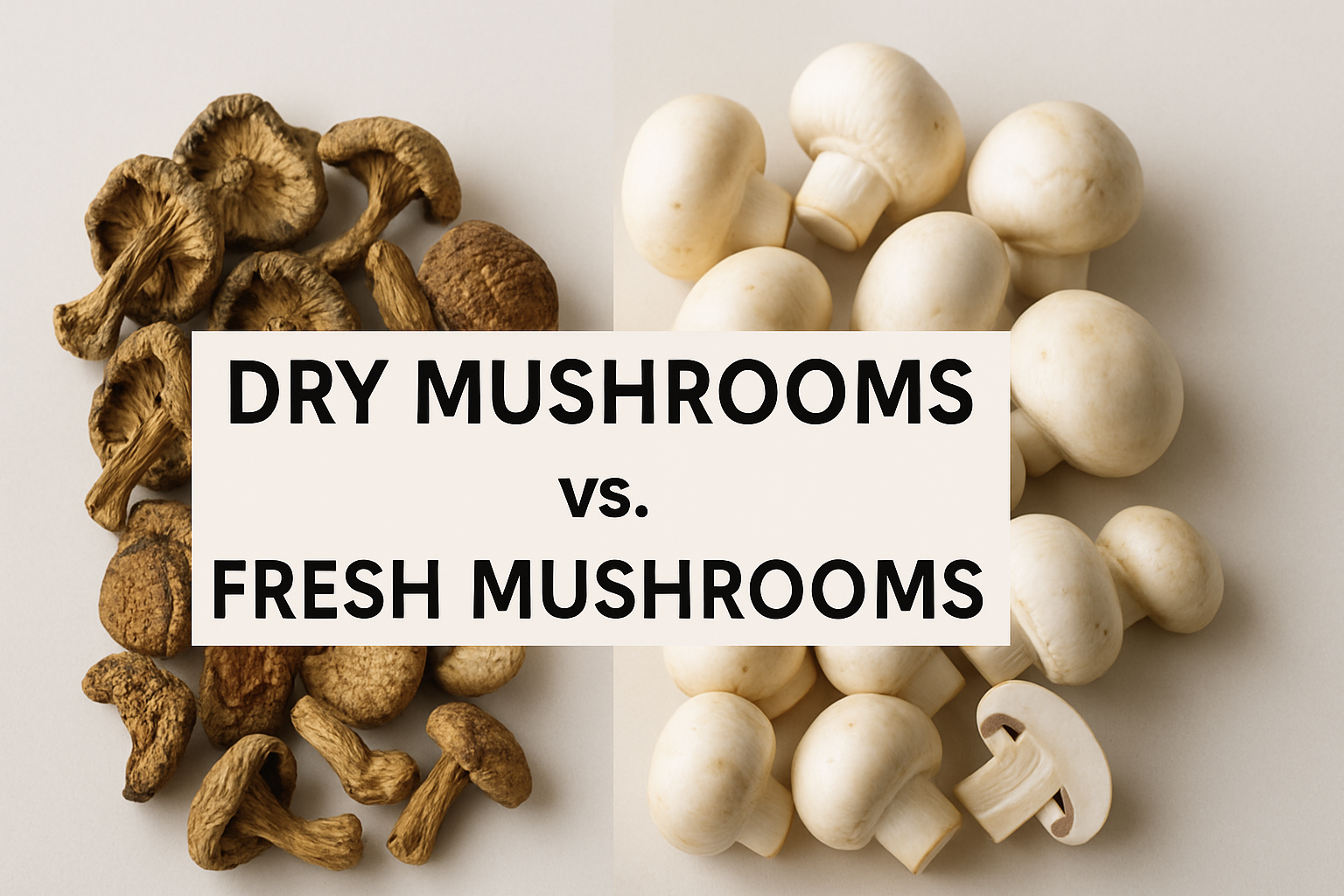Mushrooms, known for their umami flavor and impressive health benefits, are a staple in cuisines across the globe. While fresh mushrooms are a common ingredient in everyday cooking, dried mushrooms also play a vital role in culinary traditions and gourmet recipes. Understanding the differences between these two forms can help cooks and food enthusiasts make informed choices based on flavor, shelf life, and cooking needs.
1. What Are Fresh Mushrooms?
Fresh mushrooms are harvested and consumed in their natural, moist state. Popular varieties include:
-
Button mushrooms (white and brown)
-
Portobello
-
Shiitake
-
Oyster
-
Enoki
Fresh mushrooms are prized for their delicate texture and mild, earthy flavor. They are commonly used in salads, stir-fries, pastas, soups, and pizzas.
Advantages of Fresh Mushrooms:
-
Texture: Soft, juicy, and ideal for dishes where mouthfeel is important.
-
Ease of Use: Require minimal preparation—just a rinse and trim.
-
Availability: Widely available in grocery stores year-round.
Drawbacks:
-
Short Shelf Life: Spoil quickly, typically within a week.
-
Storage: Require refrigeration and careful handling.
2. What Are Dry Mushrooms?
Dried mushrooms are fresh mushrooms that have undergone dehydration to remove their moisture content. Commonly dried varieties include:
-
Porcini
-
Morel
-
Shiitake
-
Chanterelle
-
Black trumpet
Drying mushrooms concentrates their flavor, making them ideal for soups, sauces, and stews. To use dried mushrooms, they must be rehydrated in warm water before cooking.
Advantages of Dry Mushrooms:
-
Intense Flavor: Drying intensifies umami and earthy notes.
-
Long Shelf Life: Can be stored for up to a year or longer if kept in a cool, dry place.
-
Versatile Uses: The soaking liquid can be used as a rich broth in recipes.
Drawbacks:
-
Preparation Time: Require soaking and rinsing before use.
-
Texture: May be slightly tougher than fresh after rehydration.
3. Culinary Uses and Flavor Profiles
| Feature | Fresh Mushrooms | Dry Mushrooms |
|---|---|---|
| Flavor | Mild, subtle | Rich, deep, concentrated |
| Best For | Quick sautés, raw dishes | Slow-cooked meals, stocks, risottos |
| Storage | Refrigerated (up to 7 days) | Pantry (6–12 months) |
| Preparation | Minimal (rinse and slice) | Soak for 20–30 minutes before cooking |
4. Nutritional Comparison
Both fresh and dried mushrooms are low in calories and high in nutrients such as B vitamins, potassium, and antioxidants. However, because dried mushrooms are more concentrated, they often contain higher nutrient content per gram compared to their fresh counterparts.
5. Which One Should You Choose?
-
Choose fresh mushrooms when you want delicate flavor and soft texture, especially in quick-cooking recipes.
-
Choose dried mushrooms when you need a deep, savory taste for broths, gravies, or long-simmering dishes.
Conclusion
Both dry and fresh mushrooms have their unique qualities and advantages. Whether you’re enhancing a simple weeknight meal or crafting a gourmet dish, the choice between fresh and dried mushrooms depends on your flavor goals, cooking method, and storage preferences. Embracing both in your kitchen can greatly expand your culinary options and deepen your appreciation for this versatile fungus.

